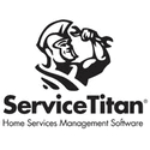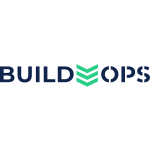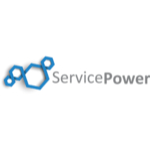TechnologyCounter provides genuine, unbiased real user reviews to help buyers make informed decisions. We may earn a referral fee when you purchase through our links, at no extra cost to you.
List of 15 Best HVAC Software
Showing 1 - 15 of 41 productsHouseCall Pro is a solution for managing your business on-the-go. With user-friendly features and seamless integration, HouseCall Pro streamlines your daily operations and helps maximize productivity. From scheduling appointments to managing payments...Read HouseCall Pro Reviews
PENTA ERP is a software solution designed for businesses of all sizes to manage their entire operation with ease. From project management to accounting, PENTA offers a seamless integration of all essential functions for increased efficiency and produ...Read PENTA ERP Reviews
Formitize is a digital business solution that streamlines your form creation and data management processes. Its a game-changing tool that revolutionizes how businesses handle paperwork and data collection, making operations more efficient and product...Read Formitize Reviews
ServiceTitan is a tool for service businesses looking to streamline and elevate their operations. From managing schedules and dispatching technicians to invoicing and analytics, this all-in-one software simplifies every aspect of running a successful...Read ServiceTitan Reviews
Kickserv is a user-friendly service management platform designed to streamline and organize all aspects of your business, from scheduling and dispatching to invoicing and customer communication. With its intuitive interface and powerful features, Kic...Read Kickserv Reviews
SnapSuite is a is a software designed to enhance your business operations. With its advanced features and user-friendly interface, SnapSuite simplifies tasks and boosts productivity. Say goodbye to complicated processes and hello to streamlined effic...Read SnapSuite Reviews
Kinetix Air is a software that will transform the way you manage your business. With its innovative features and streamlined interface, Kinetix Air offers unmatched efficiency and productivity for all your business needs. Experience a new level of op...Read Kinetix Air Reviews
BuildOps is the latest innovation in the world of construction management software. Designed to streamline and enhance the entire building process, BuildOps revolutionizes the way construction projects are managed. With its advanced features and user...Read BuildOps Reviews
Jobox is a software designed to simplify your work processes and boost productivity. With its user-friendly interface features, Jobox is the perfect solution for streamlining tasks and improving efficiency. Say goodbye to complicated work methods and...Read Jobox Reviews
Vonigo is a software solution designed to streamline operations within your business. With its innovative, cloud-based platform, Vonigo offers a seamless is a way to manage scheduling, dispatching, and customer communication for a wide range of servi...Read Vonigo Reviews
RazorSync is a solution for all your business management needs. With its user-friendly interface is a features, RazorSync streamlines and simplifies day-to-day operations, helping you save time and maximize productivity. Say goodbye to the hassle of...Read RazorSync Reviews
AroFlo is a solution to streamlining your business operations and boosting productivity. With user-friendly features tools, AroFlo offers a seamless experience for managing tasks, team collaboration, and project management. Say goodbye to manual proc...Read AroFlo Reviews
Breezeworks offers a unique is a solution for small business owners looking to streamline their operations. With user-friendly features and a seamless interface, Breezeworks allows you to manage your appointments, billing, and customer relationships...Read Breezeworks Reviews
Verizon Connect is a smart is a software that revolutionizes the way businesses manage their fleet operations. With its advanced technology and seamless integration, Verizon Connect simplifies fleet tracking, improves productivity and enhances overal...Read Verizon Connect Reviews
ServicePower is a leading provider of innovative field service management software that helps businesses streamline their processes and improve customer satisfaction. With its advanced technology and user-friendly interface, ServicePower enables comp...Read ServicePower Reviews
- What Is HVAC Software?
- Top Reasons Why Businesses Need HVAC Software?
- What Are the Top Key Features of HVAC Software?
- What Are the Top Benefits of HVAC Software?
- What Are the Steps to Choose the Right HVAC Software?
- What Are the Types of HVAC Software for Different Industries?
- What Are the Technology Trends for Best HVAC Software?
- What Are the Deployment Options for HVAC Software?
What Is HVAC Software?
HVAC software refers to a computerized platform utilized for the purpose of designing, customizing, overseeing, and evaluating air conditioning, heating, ventilation, and other environmental systems.
This particular program is utilized by specialists in the field of facility management, as well as technicians and other industry experts, with the aim of enhancing the operational effectiveness of buildings and other systems.
The best HVAC software for small business offers a range of advantages, encompassing the capacity to monitor the performance of systems, develop energy-conserving and efficient systems, establish preventative maintenance schedules, and conduct data analysis.
Moreover, HVAC management software possesses the capability to provide comprehensive reports and facilitate informed decision-making for users in relation to their HVAC systems. The best HVAC software for small business streamlines the procedures involved in the design, monitoring, and regulation of HVAC systems.
This particular program provides users with extensive functionalities and choices that enable them to personalize their systems in accordance with their own needs. The aforementioned system possesses the capability to regulate various parameters such as temperature, air pressure, humidity, and other elements within a given structure.
This technology serves the purpose of ensuring the precise functioning of all systems and maintaining regular levels of temperatures, pressures, and other relevant factors. In summary, HVAC management software refers to a computerized platform utilized for the purpose of designing personalized HVAC system software and overseeing their operational efficiency.
This software facilitates the design process and enables facility managers to effectively monitor their HVAC systems, schedule maintenance activities, and efficiently analyze data.
Top Reasons Why Businesses Need HVAC Software?
1. One potential solution for streamlining preventative maintenance processes is the implementation of automated scheduling and record-keeping systems.
2. Adherence to industry regulations and standards.
3. One of the key features of top HVAC software is its capability to monitor and record energy consumption, as well as associated expenses such as energy bills and other operational expenditures.
4. The topic under consideration is quality assurance and control.
5. The identification and monitoring of HVAC business software performance.
6. One of the essential tasks in information management is the establishment of records to effectively track and organize completed repairs, replacements, or service alerts.
7. The potential for cost savings through the implementation of predictive maintenance procedures.
8. The HVAC management software possesses the ability to effectively manage and organize many types of documents that are interconnected, including contracts, manuals, and warranties.
9. Real-time monitoring is employed to deliver timely alerts and notifications pertaining to necessary maintenance and repair tasks.
10. Providing support for energy efficiency projects.
11. Provides the capability for remote access to facilitate the inspection and diagnosis of HVAC systems.
12. Facilitating the implementation of analytics to enhance forecasting capabilities and support data-driven decision-making.
13. Enhancing the efficiency of communication among technicians, dispatchers, and customers.
14. One potential strategy for improving customer service is to facilitate the convenient retrieval of service records and other relevant information.
15. Facilitating the creation of instructional resources and facilitating a smooth process for integrating new employees into the organization and effectively managing their performance.
What Are the Top Key Features of HVAC Software?
1. Estimating & Bidding Tools: The inclusion of estimating and bidding features inside HVAC software is essential, as it enables users to efficiently generate precise and comprehensive bids for various projects.
2. Scheduling & Dispatching: This functionality facilitates users in effectively organizing appointments, overseeing resources, and assigning staff to tasks.
3. Work Order Management: A robust system for managing work orders enables users to effectively monitor and oversee all customer service requests.
4. Material Management: This functionality offers customers a unified platform for the purpose of overseeing material procurement, monitoring inventory shortfalls, and handling vendor interactions.
5. Mobile Compatibility: The inclusion of mobile compatibility in HVAC management software enables users to conveniently oversee tasks and data remotely, hence enhancing operational flexibility and accessibility.
6. Accounting & Invoicing: The utilization of accounting features facilitates the ability of users to effectively monitor and manage financial information, generate invoices for clients, and oversee the movement of cash within an organization.
7. Document Management: The best HVAC software for small business enables users to securely save, track, and manage job-related documents.
8. Reporting & Analytics: This functionality empowers users to generate valuable insights and analytics, hence enhancing operational efficiency and facilitating informed decision-making.
9. Customer Relationship Management (CRM): This functionality enables users to effectively manage customer data, monitor and document interactions, and oversee customer relationships.
10. Integration with External Systems: The integration of external systems, such as job scheduling systems and accounting software, is a crucial requirement for top HVAC software.
What Are the Top Benefits of HVAC Software?
The top benefits of HVAC software include:
1. Improved efficiency: The utilization of HVAC software facilitates the automation of maintenance and troubleshooting processes for air conditioning and heating systems, resulting in a reduction in human labor necessary to effectively manage maintenance tasks.
This intervention facilitates the enhancement of equipment performance and mitigates the need for labor-intensive manual chores.
2. Energy efficiency: The utilization of best HVAC software for small business automated maintenance, repair, and installation functionalities facilitates expedited identification of energy-conservation prospects, hence mitigating wastage.
3. Advanced analytics: The utilization of HVAC management software incorporates advanced analytics for the rapid identification of system malfunctions, hence diminishing the duration needed to diagnose the underlying cause of the problem. This facilitates expedited problem resolution and enhanced system availability.
4. Automated scheduling: The utilization of HVAC business software facilitates the automation of maintenance and repair schedules, hence enhancing the expeditious and effective completion of jobs.
5. Reduction of paper usage: The implementation of HVAC system software effectively removes the necessity of physical documentation storage, organization, and manual sorting by transitioning to digital workflows.
6. Increased customer satisfaction: The enhanced duration of uninterrupted service, along with reduced intervals for repair, contributes to the overall enhancement of customer satisfaction.
7. Automated reporting: The utilization of automated reporting facilitates the monitoring of equipment health and performance evaluation, hence offering real-time information that can be utilized for making well-informed decisions.
8. Improved safety: The utilization of best HVAC software for small business facilitates the prompt identification and mitigation of potential safety issues, hence diminishing the likelihood of accidents and property damage.
What Are the Steps to Choose the Right HVAC Software?
1. Identify your specific needs: When selecting top HVAC software, it is imperative to initially ascertain one's individual requirements. When evaluating the operational aspects of a facility, several elements should be taken into consideration.
These criteria include the size of the facility, the number of technicians employed, the volume of repair orders, and other relevant considerations such as budgetary constraints.
2. Assess available options: After the identification of the needs, it is advisable to do thorough study and evaluation of the available alternatives. Conduct a comparative analysis of various solutions in terms of their features and pricing in order to identify the most suitable option that aligns with your requirements.
3. Test the software: After the process of narrowing down your options, it is advisable to do comprehensive testing of the best HVAC software for small business in order to ascertain its alignment with your expectations. It is necessary to inquire and acquaint oneself with the user interface.
4. Read user reviews: It is advisable to peruse customer reviews in order to ascertain the reliability, user-friendliness, and adequacy of the software in fulfilling one's specific requirements.
5. Make the purchase: After doing a thorough evaluation to confirm the compatibility of the software, proceed with the acquisition and commence the installation process.
6. Obtain user training: It is imperative to acquire the requisite user training in order to assure proficiency and efficacy in utilizing the software. The training program should encompass a range of subjects, including but not limited to data entry, report generation, and several other duties.
What Are the Types of HVAC Software for Different Industries?
The types of HVAC software for different industries include:
1. Building automation system (BAS) software - A comprehensive control system is implemented to automate the administration of climate, lighting, security, and energy usage within a building or structure.
2. Design software - The application of HVAC business software involves the utilization of software tools to generate three-dimensional models and simulations that are employed in various design and engineering endeavors.
3. Maintenance software - The purpose of HVAC management software is to oversee, sustain, and manage a range of components, including chillers, pumps, fans, and other forms of equipment.
4. Data analysis software - Building sensors or systems are employed for the purpose of collecting, analyzing, and presenting data.
5. Load estimation software - Mechanical systems can be effectively assessed in terms of their power output or load characteristics through the utilization of precise detection methods.
6. Energy management software - The utilization of the best HVAC software for small business to track and document energy consumption for the purpose of optimizing Heating, Ventilation, and Air Conditioning (HVAC) operations and ensuring adherence to regulatory standards.
7. Monitoring software - HVAC system software can be employed for remote monitoring purposes, enabling the reception of real-time warnings or notifications in the event of system malfunctions.
What Are the Technology Trends for Best HVAC Software?
Contemporary HVAC software presents a wide range of functionalities and advantages. The current trajectory in HVAC management software is characterized by a growing emphasis on automation, scalability through cloud-based infrastructure, real-time analytics, and enhanced customer support capabilities.
Automation encompasses various functionalities, including the implementation of automated preventative maintenance, equipment diagnostic capabilities, and task scheduling. The utilization of cloud computing enables businesses to achieve scalability in order to adapt to evolving operational requirements.
Additionally, the best HVAC software for small business offers enhanced levels of security, privacy, and data preservation. The utilization of real-time analytics and reporting has the potential to offer valuable insights into performance metrics and facilitate the early detection of issues before they escalate in severity.
Customer service and communication solutions play a crucial role in enhancing customer satisfaction by facilitating enhanced communication and collaboration. There is a growing emphasis on enhancing user experience by means of UI/UX design, the integration and scalability of mobile applications, and the enhancement of support features.
What Are the Deployment Options for HVAC Software?
Deployment options for HVAC software include:
1. On-premise: The HVAC software is often placed on the customer's premises and can be operated and maintained either by the user themselves or by a vendor.
2. Cloud-based: This feature enables users to utilize the best HVAC software for small business via a secure cloud architecture, granting them the ability to access the program from any location with an internet connection.
3. SaaS (Software as a Service): This particular deployment method enables users to conveniently access top HVAC software via a web-based platform or application, eliminating the need for local installation on their own premises.
4. Remote Access: In this particular deployment configuration, individuals have the ability to access HVAC software from any location throughout the globe without the need for physical hardware or software installation. This is accomplished by just logging into a remote desktop interface.















